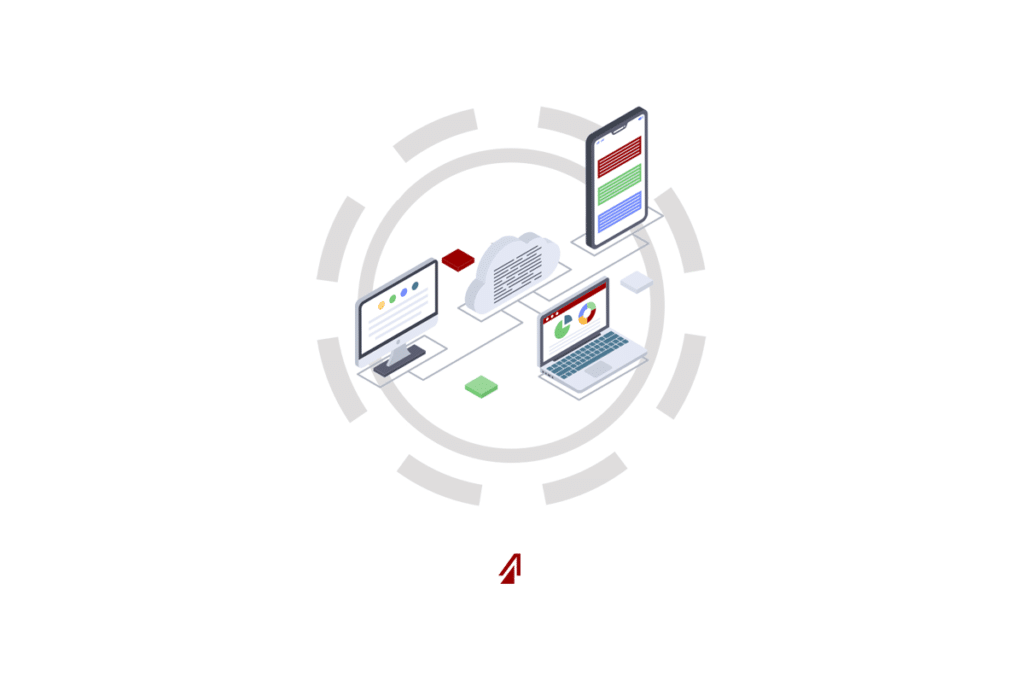Change is on the horizon – particularly for procurement workers in logistics. Traditional work like routine, labor intensive transactional activities, will soon be gone in favor of new technologies assisting in everyday outlets. The introduction of four technologies will help workers break through the typical tedium of procurement contracts and allow them to focus on more crucial responsibilities. These technologies include: Machine learning, Natural Language Processing, Robotic Process Automation, and Big Data Analysis. These breakthroughs, along with other emerging technologies, will be able to form useful and intuitive tools that will help workers by upending archaic procurement processes.
Machine Learning
What is Machine Learning
Machine learning is an application of artificial intelligence (AI) that can learn on its own, without being programmed, and improve from experience. It primarily recognizes patterns in large datasets and makes decisions without much human intervention.
How Does Machine Learning Work
It works by analyzing the data to recognize patterns. Then, the computer will learn from previous computations to make reliable, repeatable decisions and results. There are a few common methods that machines use to learn in a business setting:
• Supervised Learning – This is where a programmer would determine what is the right answer before running the program and the system would look for patterns that returned the right answer. It is typically used when historical data can forecast or predict future events.
• Unsupervised Learning – A programmer would not provide the system any labels to learn but would allow the information to find the right answers on its own. This is helpful for identifying segments of customers.
• Semi-supervised Learning – This method uses both labels and no labels and is typically used for applications where it costs too much to label all of the tags. This method is used alongside methods like classification, regression, and prediction.
How will Machine Learning Help Logistics Procurement
Logistics procurement is largely based on data, and machine learning is equipped to analyze and process that data. Currently, workers spend hours to find, file, and process large amounts of complex data. Then they must use that data to make decisions about products, services, or vendors. Machine learning can eliminate most of the raw manpower it takes to utilize that data. It can take large inputs of raw data, contracts, reports, or analyses and process it into useable information. These tools allow procurement workers to forecast demand, prepare for expected issues like consumption, and manage unexpected issues like problems for freight in transit. This gives customers, suppliers, and managers superior visibility of their supply chains and allows them to make better decisions.
Another useful application for machine learning for procurement workers is as a digital assistant. These assistants are programmed with labels guiding users to a particular outcome. It is often applied to interactive tools like chatbots or task prompts that help users through in-depth contracts or processes. These tools can move tasks forward from one prompt to the next and catch mistakes or inconsistencies as it goes along. This prevents more errors and allows for quicker user adoption.
Natural Language Processing
What is Natural Language Processing
Natural Language Processing (NLP) is another branch of AI that helps computers understand human language. Not only does the system understand, but it can also interpret language (speech, text documents, etc.) and speak itself.
How does NLP Work
It works by computing powerful algorithms that decipher what speech it is being provided. Human expression is limitless when it comes to speech or text. Communications are not always written in a professional style or format. Often messages in hard copy, texts, or emails come in with disjointed words or thoughts, partial word abbreviations, or slang. Traditionally, this would take workers time to read, interpret, and act on what information they were able to parse from the message, but with NLP, a computer program is able to handle that task. According to SAS, a world leader in analytics, NLP “helps resolve ambiguity in language and adds useful numeric structure to the data for many downstream applications such as speech recognition or text analytics.”
NLP treats speech the way people do who diagram a sentence. It breaks down sentences into words or parts of words and assigns each part a value. Then it uses algorithms to determine what values are present, how they are used, and what the text overall means. Some software programs can recommend actions to users based on the content written in the original message.
How will NLP Help Logistics Procurement
Today, procurement workers in logistics deal with lengthy documents like contracts, company profiles, and data sheets. They must read each document for pertinent information and format it into a useable form that they can list in their databases. Technology like NLP can relieve the need for individuals to do this. NLP can take these documents, read them, and interpret them into more manageable information. SAS offers several different ways NLP can do this:
• Content Categorization – These can help procurement workers by summarizing documents based on specific content such as a search query, content alerts (e.g. suspicious clauses, anomalies, or fraud) and detect duplicates.
• Topic Discovery and Modeling – This tool can discover the meaning of a document and use advanced analytics like forecasting or optimization. Workers can use these tools to quickly mark pages for content and plug them into a database. E.g. a company bio, insurance form, etc.
• Contextual Extraction – For multiple forms or database structuring, this tool can pull structure-based information and apply it to a clean, readable format.
• Sentiment Analysis – This can determine a document’s mood or subjective opinion based on the text. This tool is particularly useful in interpreting emails or more free-form data like comments.
• Document Summarization – NLP can create a concise synopsis of a large body of text.
• Machine Translation – This feature can translate text from one language to another.
Each of these functions is useful to procurement workers as they can limit the amount of text they must read to find out what a document says or means. This software can interpret tricky documents like contracts to tell them if there is a mistake or if a portion is suspicious. Overall, it gives the user additional insights that they might not have previously had and helps more work be accomplished with fewer staff members.
Robotic Process Automation
What is Robotic Process Automation
Laserfiche defines Robotic Process Automation (RPA) as “the use of specialized computer programs, known as software robots, to automate and standardize repeatable business processes.” These robots automate rules-based business processes to streamline operations and reduce costs.
How does RPA Work
RPAs are easily programmable software “bots” that mimic workers’ functions and automate them. Often these bots are responsible for routine activities like logging in and out of applications, copying and pasting data, opening email attachments, filling out forms, or communicate with other digital systems. They are largely effective in saving workers time and effort as well as increase accuracy by eliminating errors or typos.
These bots are consistent, reliable, and can work around the clock to keep up with operational requests. In an interview with CIO magazine, David Schatsky, Managing Director at Delloitte LLP, tells about how they worked with a bank to redesign its claims process, using RPAs. The bank used 85 bots to run 13 processes and were able to handle the capacity of 200 full-time employees at 30 percent of the cost.
How will RPA Help Logistics Procurement
RPAs can help logistics procurement in several ways. Workers do not need to use traditional methods like routine data entry, outdated customer service modes, or manually messaging individuals for confirmations. RPAs let them automate many of the mundane tasks procurement workers face and allow the workers to focus on more critical operations. In addition, RPAs can:
• Speed Along Fund Authorization – Having automated processes, like data input, can fill out documents more quickly. The bots can scrape documents for information, format the data into the procuring company’s format, and automatically forward the documents to legal and the customer for final approval.
• Trigger Responses – The bots can move users from task to task to help ensure the process is strictly followed.
• Monitor Contracts for Issues – Processes can be programmed, in conjunction with NLP, to flag any incorrectly filled out paperwork or any suspicious language and automatically notify the procurement workers or legal team. That way, errors can be corrected, and workers can have better accuracy.
• Remove Variables from Troubled Processes – Automating processes can amplify where errors occur. Bots cannot automatically adjust to changes up or downstream of themselves; so, when an error occurs, the bots will make them apparent. Then, procurement workers or managers can go in and correct them.
Big Data Analysis
What is Big Data Analysis
Big data analysis is taking in large volumes of data and processing it in a way that allows companies to make better decisions.
How Does Big Data Analysis Work
The process of collecting data and applying it to one’s business or customers has been around since the dawn of business, but the explosion of the term “big data” came about in the early 2000s. At that time, a data analyst named Doug Laney coined the term and presented the definition as the “3 V’s.” SAS supplements Laney’s definition with two additional terms – bringing the total to five. They are:
• Volume – There are many ways companies can get information: business transactions, social media, sensors, or machine-to-machine. Deciding what is relevant data and finding out how to store it is the key to making big data work. In procurement, this could come from company information packets, questionnaires, contracts, service data, and other reports.
• Velocity – Data is easy to capture and can come in quickly and should be dealt with in a timely way. For procurement workers in logistics, this information could come from sales, planning, supply chain managers or carrier developers. Often this information is time sensitive and must be taken care of quickly.
• Variety – Data can come in many different formats – structured or unstructured. For procurement workers, structured data could be a numeric table. Unstructured data could be text documents, email, or financial transactions.
• Variability – This type of data can come in at unpredictable times and in unpredictable varieties. Procurement workers would often see this type of data with daily, seasonal, or event triggered reports.
• Complexity – Procurement workers should be concerned about creating relationships between multiple data sources.
How will Big Data Analysis Help Logistics Procurement
Big data provides logistics procurement workers options to crunch massive amounts of data, from varying sources, and turn it into actionable insights. These often come from pattern recognition in historical data. For instance, if a procurement team was going to sign a new carrier to a lane contract, big data could analyze numerous factors like these:
The Carrier’s Service History | Lane Shipment Volume | On-time Pickup and Delivery Rates for the Carrier | On-time Pickup and Delivery Rates for the Shipper and Receiver | Lane Bid Rate | Historic Lane Rates | Current Lane Rates |Matching Connecting Loads
Then the data could evaluate if the carrier is a good fit for the lane or not and evaluate the risk each option has. The complex algorithms can take in the data, create various models, run numerous scenarios, and make predictive decisions based on the outcomes of the scenarios. That way, procurement workers and management can make the most informed decisions.
Takeaway
Change is coming to the procurement marketplace. More companies are adopting four essential technological tools to help relieve overworked staff, provide savings, increase accuracy, and make better decisions. These tools are machine learning, natural language processing, robotic process automation, and big data analysis. According to AT Kearney, global management consulting firm, most routine procurement processes will be automated within the next 3-5 years.
Some teams, like Amazon Business Services, are ahead of the curve and are taking the tools a step further. Instead of automating limited functions, they are working on automating an entire procurement team. They are building a system that will find an aspect needing improvement, automatically solicit bids, evaluate responses, and award business to the winning bid. This type of automation is essential to grow and develop the industry, overcome archaic, wasteful methods, and help procurement workers with their day-today tasks.



